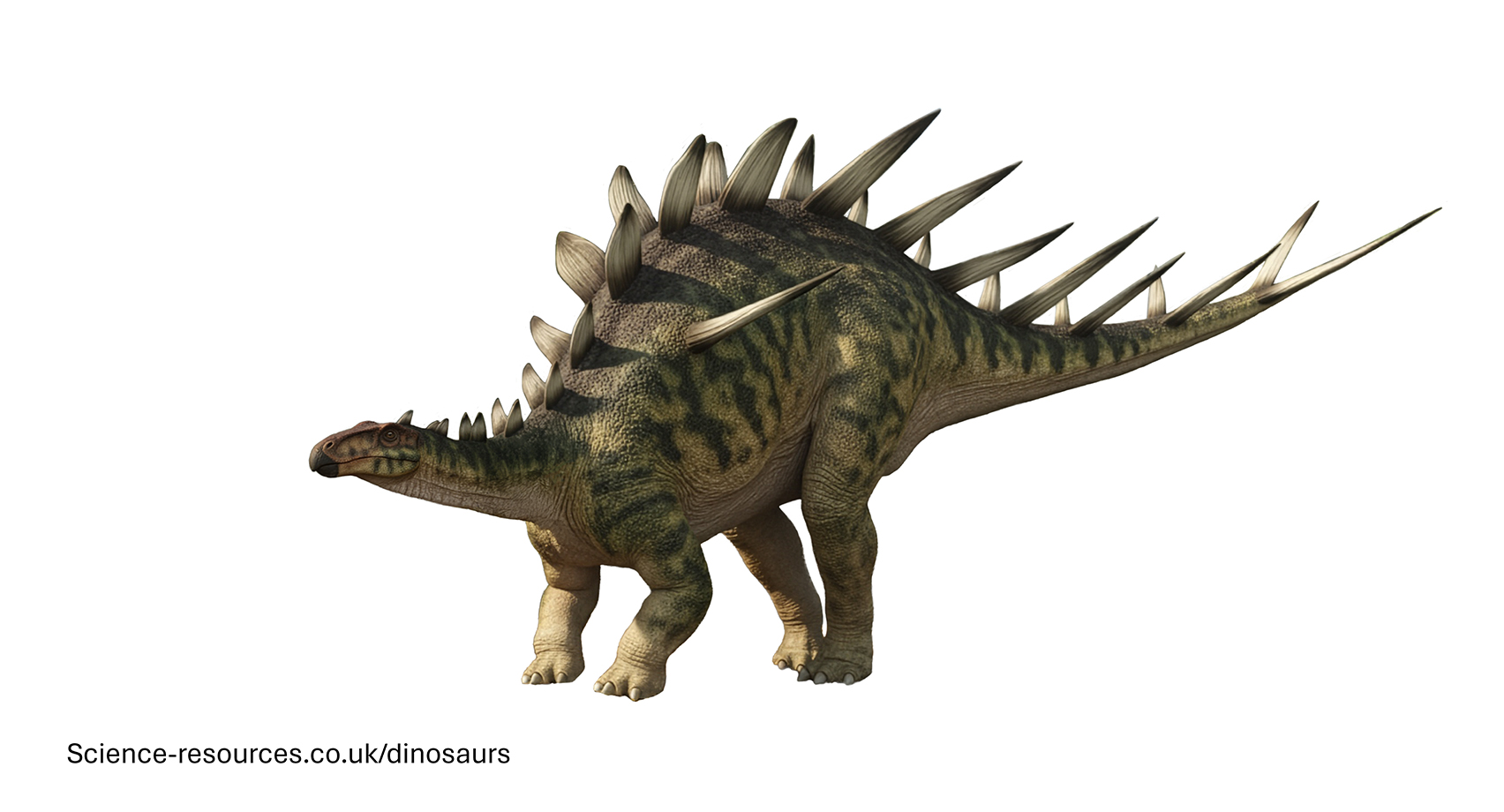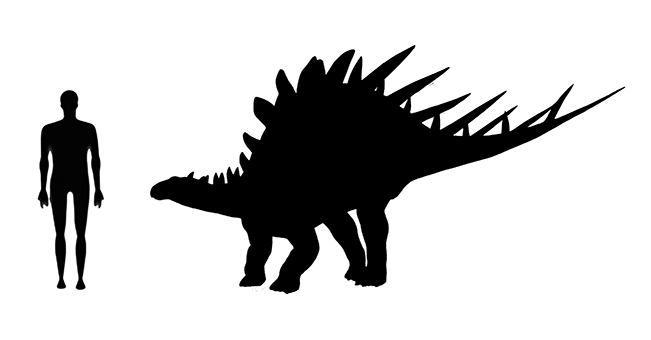Dinosaurs A:Z | K
You may also be intrested in: Free Dinosaur games
Dinosaurs: Kentrosaurus (Pointed Lizard)
You may also be intrested in: Free Dinosaur games
Last updated: 28th Oct 2025 Kentrosaurus was a remarkable, spiky dinosaur that lived during the Late Jurassic Period, about 155 million years ago, in what is now Tanzania, Africa. It is best known for the impressive double row of long, sharp spikes and plates running along its back and tail. Although it looked fierce, Kentrosaurus was a gentle plant-eater that relied on its armour for protection. Kentrosaurus was a medium-sized member of the stegosaur family. It could grow up to 4.5 metres (15 feet) long from nose to tail and stood about 1.5 metres (5 feet) tall at the hips. Weighing around 1 tonne (about as much as a small car), Kentrosaurus was smaller than its famous relative, Stegosaurus, but still quite impressive! Kentrosaurus had a small head, a long neck, and a bulky, barrel-shaped body. Its most striking feature was the double row of plates and spikes: the plates started at its neck and became long, sharp spikes towards its tail. The tail ended with several giant spikes that could be swung at predators. Kentrosaurus walked on four sturdy legs, with its back legs much longer than the front ones. Kentrosaurus Generative AI Notification: Some elements of this image have been created or enhanced using AI technology. To find out how we create all our dinosaurs, click here. Kentrosaurus was a plant-eater (herbivore). Scientists believe it used its small, beaked mouth to nibble on low-growing plants, ferns, and cycads. Its teeth were shaped for cropping and chewing tough vegetation close to the ground. Fossils of Kentrosaurus have been found in Tanzania, which during the Jurassic was a lush, tropical environment filled with giant ferns, cycads, and other prehistoric plants. Kentrosaurus probably roamed in herds, grazing on vegetation and keeping a watchful eye out for predators.
What is a Kentrosaurus?
How big was Kentrosaurus?
Appearance

What did Kentrosaurus eat?
Where did Kentrosaurus live?
Interesting Facts
Pronounced: ken-TROH-sore-us Name Means: "Pointed Lizard" Length: up to 4.5 m (15 feet) Height: up to 1.5 m (5 feet) at the hips Weight: about 1,000 kilograms (1 tonne) Diet: Herbivore (plants) Time: Late Jurassic (about 155 million years ago) Fossils Found: Africa (Tanzania)


Kentrosaurus Facts
Kentrosaurus was part of the Stegosauridae family, a group of plant-eating dinosaurs famous for their rows of plates and tail spikes. Its closest relative is Stegosaurus, but Kentrosaurus was smaller and had more spikes than plates.
During the Late Jurassic Period, Kentrosaurus lived alongside many other dinosaurs and prehistoric animals in Africa, such as:
Q1: What is a Kentrosaurus?
A1: Kentrosaurus was a large, plant-eating dinosaur that lived during the Late Jurassic period, around 150 million years ago. It is known for its distinctive back plates and spiked tail.
Q2: What does Kentrosaurus mean?
A2: Kentrosaurus means "Pointed lizard", named for its sharp spikes.
Q3: Was Kentrosaurus a carnivore?
A3: No, Kentrosaurus was a plant-eater (herbivore).
Q4: How big were Kentrosaurus’ spikes?
A4: Some of Kentrosaurus’ tail spikes could grow up to 70 cm (over 2 feet) long!
Q5: Did Kentrosaurus have plates as well as spikes?
A5: Yes, Kentrosaurus had small plates on its neck and back, but many more spikes along its sides and tail.
Q6: Where did Kentrosaurus live?
A6: Kentrosaurus lived in what is now Tanzania, Africa.
Q7: Was Kentrosaurus fast?
A7: No, Kentrosaurus was a slow-moving dinosaur.
Q8: Did Kentrosaurus use its spikes for defence?
A8: Kentrosaurus’ tail spikes (also called a "thagomizer") could have been swung at predators for defence.
Which family of Dinosaurs did Kentrosaurus belong to?
What other dinosaurs lived at the same time as Kentrosaurus?
Kentrosaurus FAQ
You may also be intrested in:
Tags: How big was Kentrosaurus, Kentrosaurus size, where does Kentrosaurus rex live, how tall are Kentrosaurus, what does Kentrosaurus mean, Kentrosaurus, Kentrosaurus brain facts